Demolition Contractors Kingswood
Find top Demolition Contractors in Kingswood
Receive 3 FREE Demolition Services quotes for your project today! Compare profiles, reviews, accreditations, portfolio, etc... and choose the best offer.
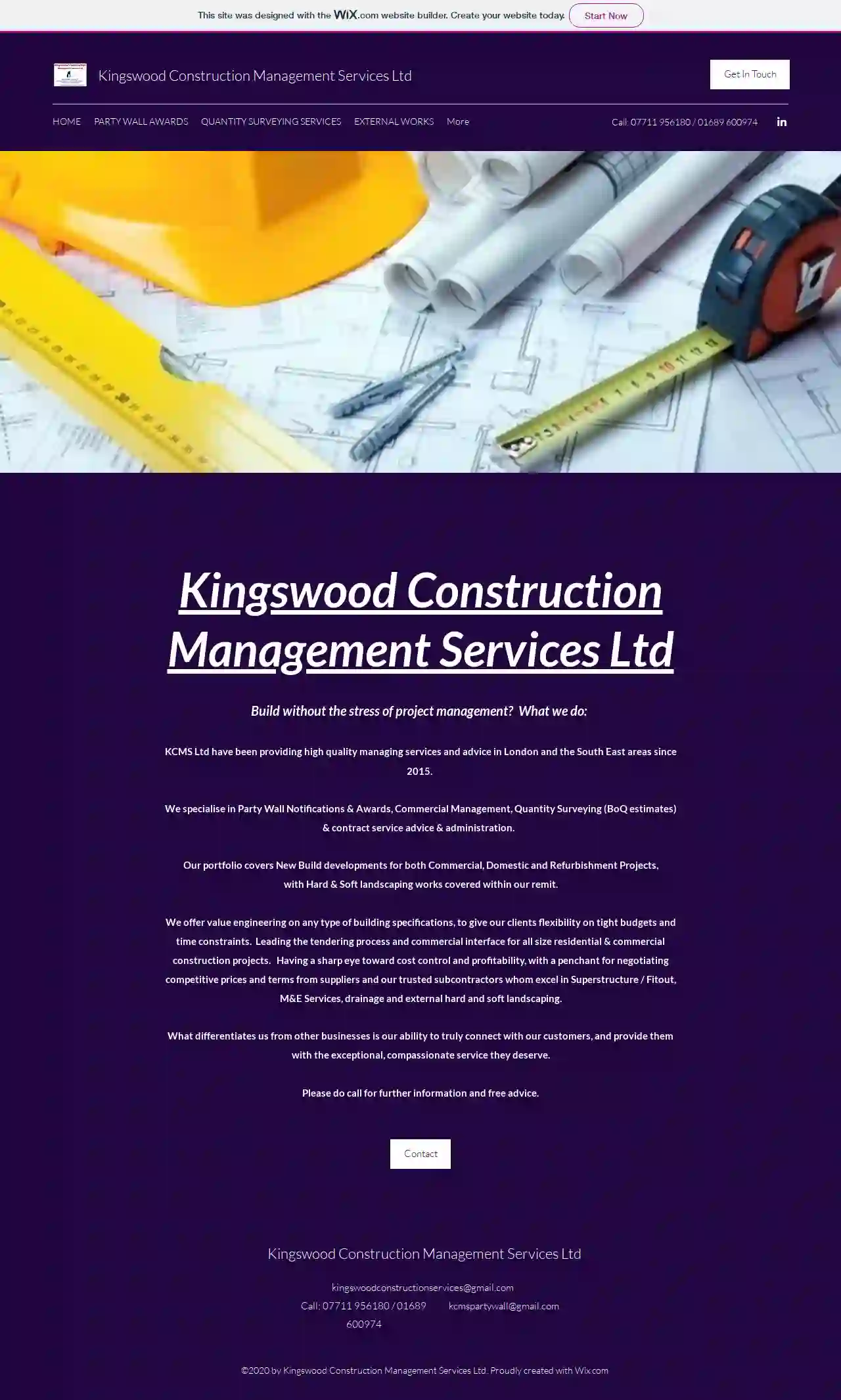
Kingswood Construction Management services ltd
1Kingswood, GBKingswood Construction Management Services Ltd Build without the stress of project management? What we do: KCMS Ltd have been providing high quality managing services and advice in London and the South East areas since 2015. We specialise in Party Wall Notifications & Awards, Commercial Management, Quantity Surveying (BoQ estimates) & contract service advice & administration. Our portfolio covers New Build developments for both Commercial, Domestic and Refurbishment Projects, with Hard & Soft landscaping works covered within our remit. We offer value engineering on any type of building specifications, to give our clients flexibility on tight budgets and time constraints. Leading the tendering process and commercial interface for all size residential & commercial construction projects. Having a sharp eye toward cost control and profitability, with a penchant for negotiating competitive prices and terms from suppliers and our trusted subcontractors whom excel in Superstructure / Fitout, M&E Services, drainage and external hard and soft landscaping. What differentiates us from other businesses is our ability to truly connect with our customers, and provide them with the exceptional, compassionate service they deserve. Please do call for further information and free advice.
- Services
- Why Us?
- Gallery
Get Quote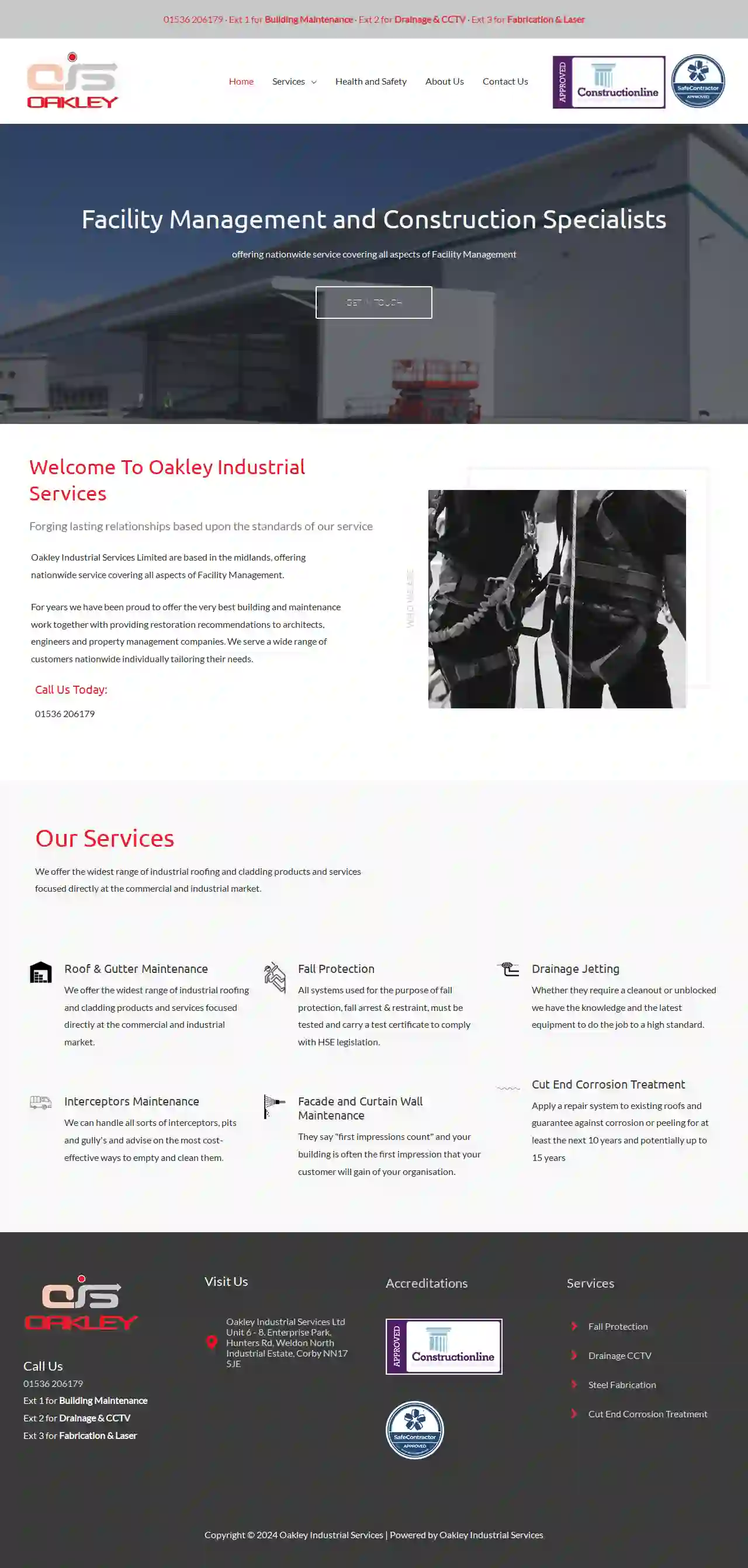
Oakley Industrial Services Ltd
55 reviewsUnit 6 - 8, Enterprise Park, Hunters Rd, Weldon North Industrial Estate, Corby, NN17 5JE, GBFacility Management and Construction Specialists offering nationwide service covering all aspects of Facility Management Welcome To Oakley Industrial Services Forging lasting relationships based upon the standards of our service Oakley Industrial Services Limited are based in the midlands, offering nationwide service covering all aspects of Facility Management. For years we have been proud to offer the very best building and maintenance work together with providing restoration recommendations to architects, engineers and property management companies. We serve a wide range of customers nationwide individually tailoring their needs.
- Services
- Why Us?
- Gallery
Get Quote
Cobley Countryside Services & Groundworks
4.73 reviewsCobley Lodge Farm, Little Oakley Corby Northamptonshire, Cobley Lodge FarmLittle Oakley Corby Northamptonshire, Corby, NN18 8HE, GBCobley Countryside Services & Groundworks Cobley Countryside Services (CCS) is a family-run business based in Northamptonshire with a rich history spanning five generations. We offer a comprehensive range of services specializing in groundworks, drainage, fencing, agricultural works, site clearance, and much more. Our expertise extends to various sectors, including Agriculture, Commercial, Estates, Public Sector, Educational, Equine, and Rural Residential Clients. At CCS, we take pride in our excellent reputation, reliability, and friendly approach to every project. We are committed to delivering high-quality workmanship and exceeding our clients' expectations.
- Services
- Why Us?
- Gallery
Get Quote
General Building & Groundworks
1Kingswood, GBWelcome to General Building & Groundworks I've been a sought-after general builder and ground worker in Gloucestershire and surrounding areas since 2018. I'm known for tackling everything from small repairs to large-scale projects. No matter the size of the job, I always work hard to ensure my clients are completely satisfied with my work. Get in touch today for a free consultation.
- Services
- Why Us?
- Gallery
Get Quote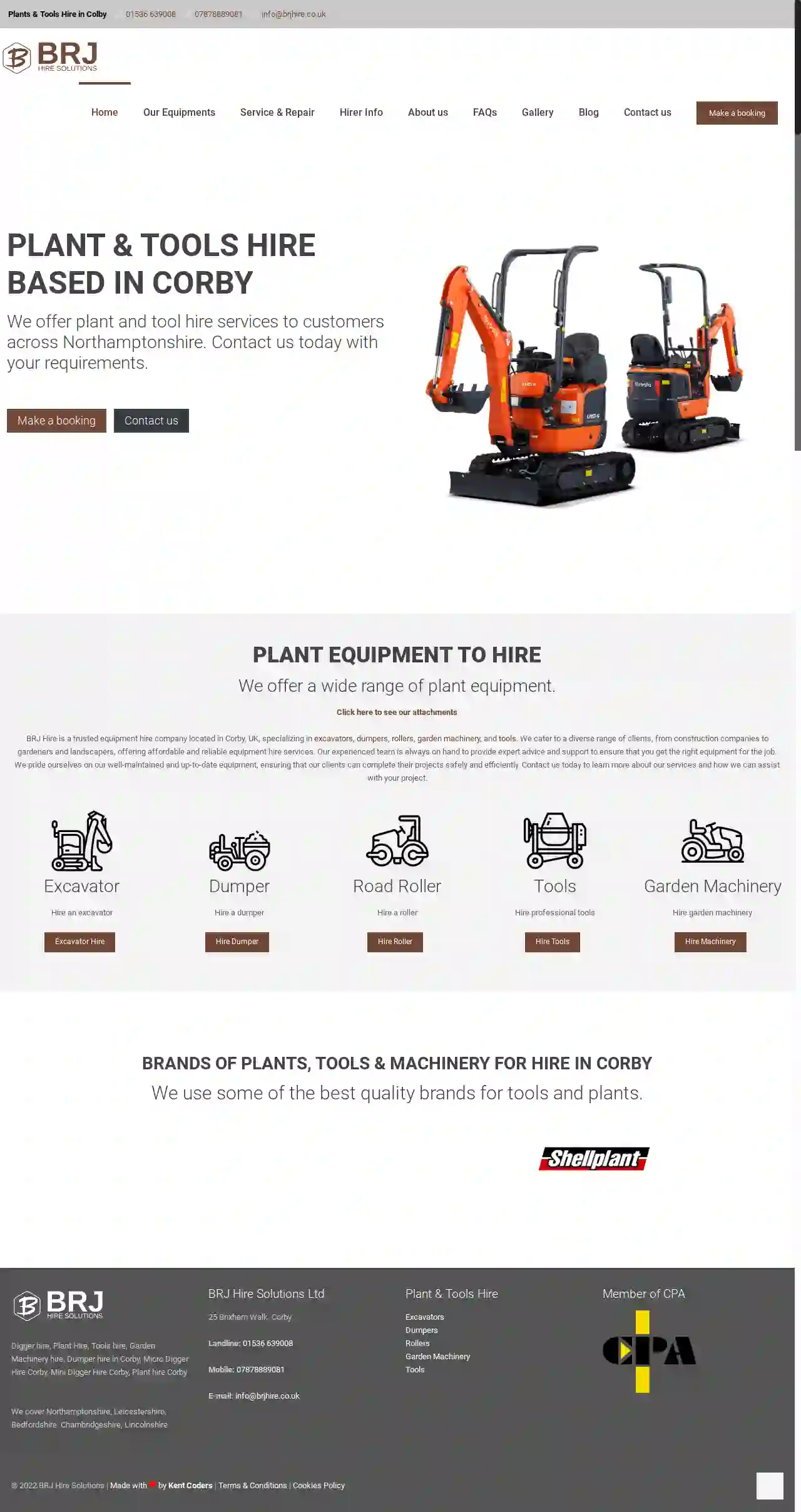
BRJ Hire Solutions
4.816 reviews25 Brixham Walk, Corby, England, NN18 8DS, GBBRJ Hire is a trusted equipment hire company located in Corby, UK, specializing in excavators, dumpers, rollers, garden machinery, and tools. We cater to a diverse range of clients, from construction companies to gardeners and landscapers, offering affordable and reliable equipment hire services. Our experienced team is always on hand to provide expert advice and support to ensure that you get the right equipment for the job. We pride ourselves on our well-maintained and up-to-date equipment, ensuring that our clients can complete their projects safely and efficiently. Contact us today to learn more about our services and how we can assist with your project.
- Services
- Why Us?
- Gallery
Get Quote
Kingswood Landscapes
51 reviewsKingswood, GBWelcome to Kingswood Landscapes Established 27 years ago, Kingswood Landscapes has built a strong reputation for delivering high-quality landscaping services with unwavering professionalism. We take pride in every project, ensuring customer satisfaction is at the heart of everything we do. Explore our website to discover the wide range of services we offer, from creating stunning driveways and patios to transforming your garden with ponds, water features, and beautiful fencing. We also specialize in ornamental walls and arches, crazy paving, brick paving, and more. Contact us today to discuss your landscaping needs. We're here to help you create the outdoor space of your dreams.
- Services
- Why Us?
- Gallery
Get Quote
Kingswood Paving
58 reviewsKingswood, GB- Services
- Why Us?
Get Quote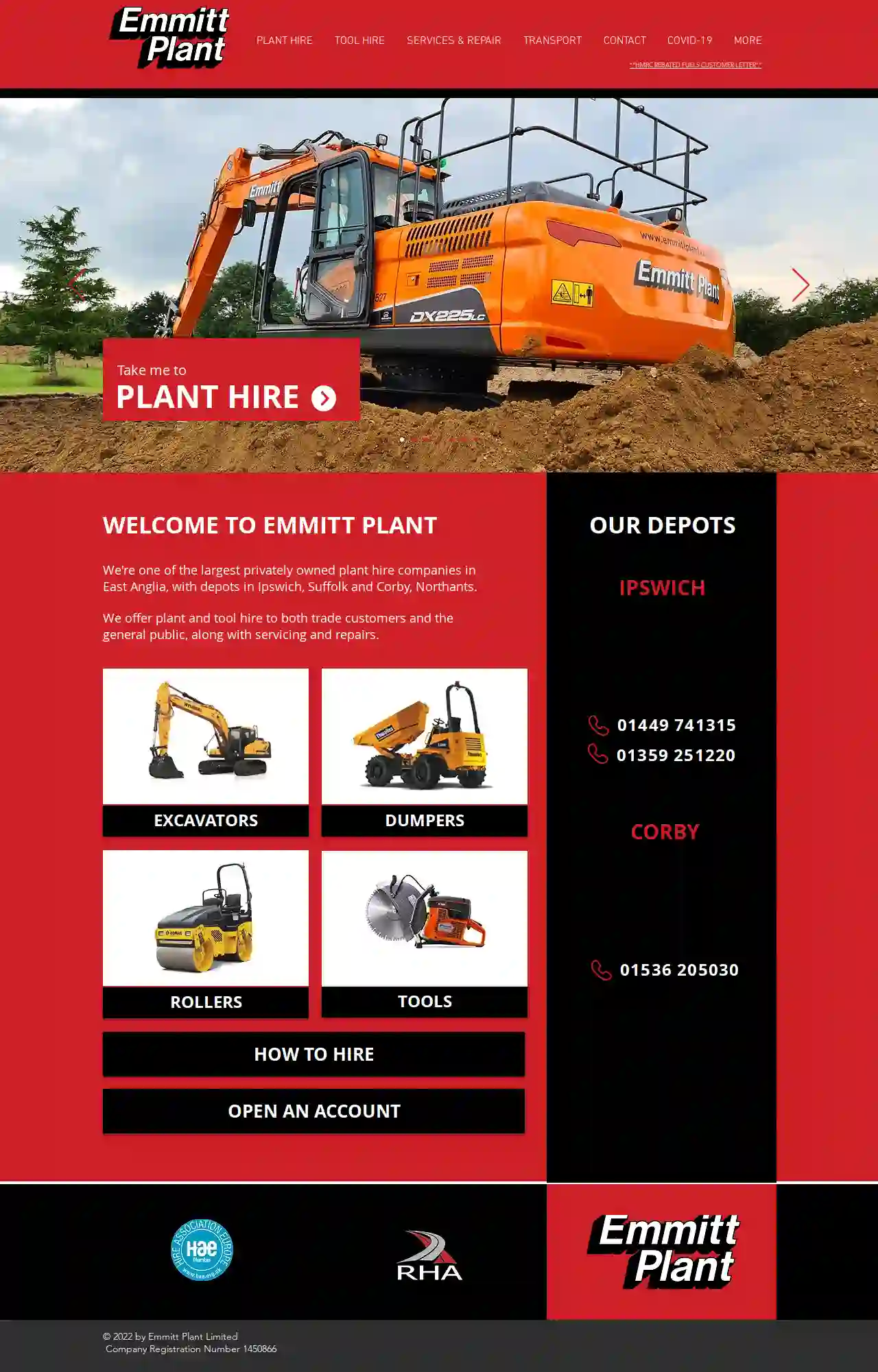
Emmitt Plant Ltd
44 reviewsIpswich, GBWelcome to Emmitt Plant We're one of the largest privately owned plant hire companies in East Anglia, with depots in Ipswich, Suffolk and Corby, Northants. We offer plant and tool hire to both trade customers and the general public, along with servicing and repairs.
- Services
- Why Us?
- Gallery
Get Quote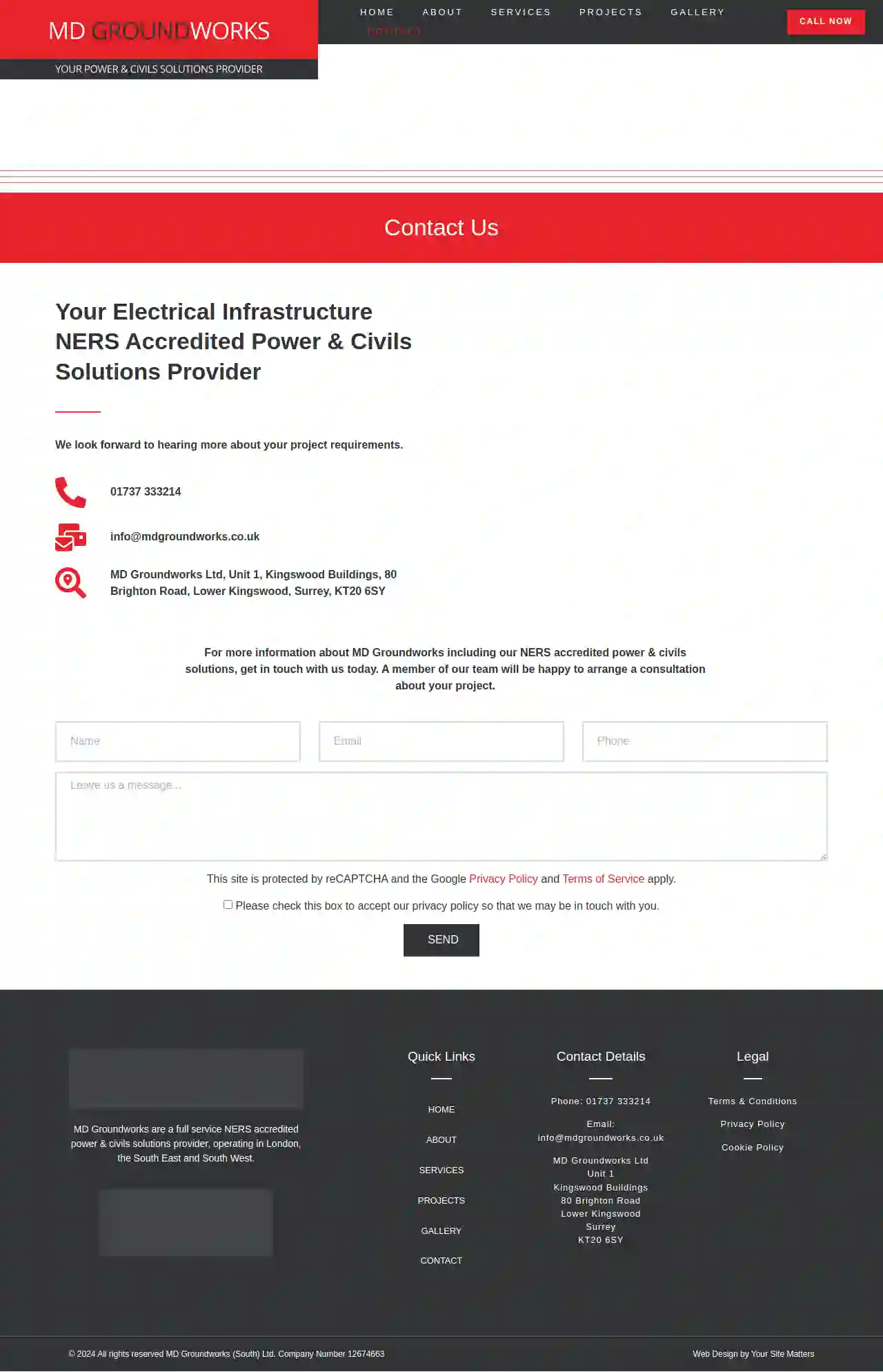
MD Groundworks Ltd
1Unit 1, Kingswood Buildings, 80 Brighton Road, Lower Kingswood, Surrey, KT20 6SY, GBYour NERS Accredited Power & Civils Solutions Provider In London, The South East And South West At MD Groundworks we deliver all aspects of power infrastructure requirements. Operating across DNO areas UKPN, WPD & SSE we adopt a professional and reliable approach to every project, delivering end to end services across Contestable and Privately-owned network platforms. Getting started is easy. Simply call us today to book your free initial consultation and we’ll connect you with an in-house expert. Tell us about your project requirements and the MD Groundworks team will provide further details on our NERS accredited power & civils solutions. As a reliable and vastly experienced contractor, we are fully committed to delivering the professionalism that you need throughout your project’s entire life-cycle. Once we’ve understood your requirements, we’ll identify which services are best suited for your project. As an all-round NERS accredited power & civils solution provider, we can help with all aspects of electrical infrastructure including utility asset duct installation & cable installation, concrete formwork and substation building, traffic management requirements and more. We take care of project management, site management and supervision, all in-line with the current CDM legislation. When you work with MD Groundworks, you can expect high-quality results, safety-conscious practices and exceptional customer service. You’ll receive the services that you expect on time and within budget. Regardless of the project size and value, everything will be undertaken by our in-house team of experienced professionals. We don't consider your project to be completed until you are wholly satisfied. MD Groundworks is a client driven firm with client satisfaction and high-quality solutions being at the forefront of everything we do. We’re built on over 30 years of power industry experience, meaning all projects are meticulously planned and executed no matter how complex your requirements are.From electrical cable installations to other essential groundworks services, we always go the extra mile for our clients and recognise the importance of investment to betterment – we continue to listen, learn, improve and grow our industry knowledge.
- Services
- Why Us?
- Accreditations
- Gallery
Get Quote
Over 11,537+ Excavation Contractors on our platform
Our excavation companies operate in Kingswood & beyond!
ExcavationHQ has curated and vetted Top Excavation Businesses near Kingswood. Find a top & trustworthy pro today.
Frequently Asked Questions About Demolition Contractors
- Dust Suppression: Use water spraying, misting systems, or other dust suppression techniques to control airborne particles.
- Noise Barriers: Erect temporary noise barriers around the demolition site to reduce noise transmission to nearby properties.
- Work Schedule: Schedule noisy demolition activities during permitted hours to minimize disturbance to neighbors.
- Communication: Keep neighbors informed about the demolition schedule and any potential disruptions.
- Implosion: Using explosives to collapse a structure inwards rapidly. Suitable for large buildings in open areas.
- Wrecking Ball: Swinging a large steel ball to impact and break down the structure. Effective for bringing down walls and other solid elements.
- High-Reach Demolition: Utilizing specialized excavators with extended arms and demolition attachments for dismantling tall structures piece by piece.
- Selective Demolition: Removing specific parts of a building while preserving other sections. Often used in renovation projects.
- Deconstruction: Carefully dismantling a building to salvage reusable materials, reducing waste and environmental impact.
- Feasibility Studies: Assessing the viability and challenges of a demolition project.
- Demolition Planning: Developing demolition plans, including method selection, sequencing, and safety procedures.
- Permitting Assistance: Navigating the demolition permitting process and ensuring compliance with regulations.
- Hazardous Material Surveys: Identifying and managing hazardous materials, such as asbestos and lead paint.
- Cost Estimating: Providing accurate cost estimates for demolition services.
- Project Management: Overseeing the demolition process and ensuring it proceeds as planned.
- 'Can I see proof of your licensing and insurance?' Verify their credentials and coverage.
- 'What experience do you have with projects like mine?' Ensure they have relevant expertise.
- 'Can you provide references from past clients?' Check their reputation and customer satisfaction.
- 'What are your safety protocols?' Prioritize contractors who emphasize safety.
- 'How will you handle hazardous materials?' Ensure they have proper procedures for asbestos or lead abatement.
- 'What is your timeline for completing the project?' Understand the project duration.
- 'How will you manage noise, dust, and debris?' Discuss mitigation measures for minimizing disruption.
- 'What are your payment terms?' Clarify payment schedules and any required deposits.
How can I minimize the dust and noise from demolition?
What are the different types of demolition?
What is the role of a demolition consultant?
What questions should I ask a demolition contractor before hiring them?
How can I minimize the dust and noise from demolition?
- Dust Suppression: Use water spraying, misting systems, or other dust suppression techniques to control airborne particles.
- Noise Barriers: Erect temporary noise barriers around the demolition site to reduce noise transmission to nearby properties.
- Work Schedule: Schedule noisy demolition activities during permitted hours to minimize disturbance to neighbors.
- Communication: Keep neighbors informed about the demolition schedule and any potential disruptions.
What are the different types of demolition?
- Implosion: Using explosives to collapse a structure inwards rapidly. Suitable for large buildings in open areas.
- Wrecking Ball: Swinging a large steel ball to impact and break down the structure. Effective for bringing down walls and other solid elements.
- High-Reach Demolition: Utilizing specialized excavators with extended arms and demolition attachments for dismantling tall structures piece by piece.
- Selective Demolition: Removing specific parts of a building while preserving other sections. Often used in renovation projects.
- Deconstruction: Carefully dismantling a building to salvage reusable materials, reducing waste and environmental impact.
What is the role of a demolition consultant?
- Feasibility Studies: Assessing the viability and challenges of a demolition project.
- Demolition Planning: Developing demolition plans, including method selection, sequencing, and safety procedures.
- Permitting Assistance: Navigating the demolition permitting process and ensuring compliance with regulations.
- Hazardous Material Surveys: Identifying and managing hazardous materials, such as asbestos and lead paint.
- Cost Estimating: Providing accurate cost estimates for demolition services.
- Project Management: Overseeing the demolition process and ensuring it proceeds as planned.
What questions should I ask a demolition contractor before hiring them?
- 'Can I see proof of your licensing and insurance?' Verify their credentials and coverage.
- 'What experience do you have with projects like mine?' Ensure they have relevant expertise.
- 'Can you provide references from past clients?' Check their reputation and customer satisfaction.
- 'What are your safety protocols?' Prioritize contractors who emphasize safety.
- 'How will you handle hazardous materials?' Ensure they have proper procedures for asbestos or lead abatement.
- 'What is your timeline for completing the project?' Understand the project duration.
- 'How will you manage noise, dust, and debris?' Discuss mitigation measures for minimizing disruption.
- 'What are your payment terms?' Clarify payment schedules and any required deposits.